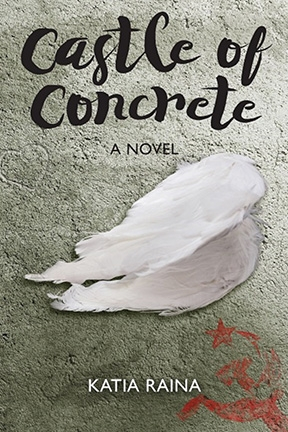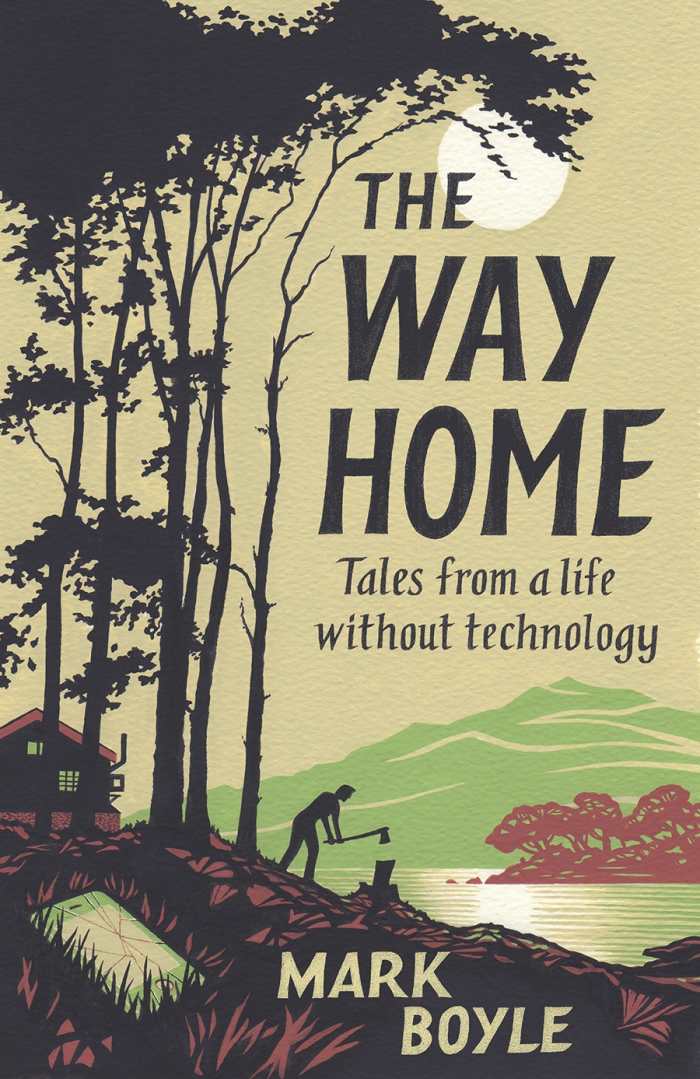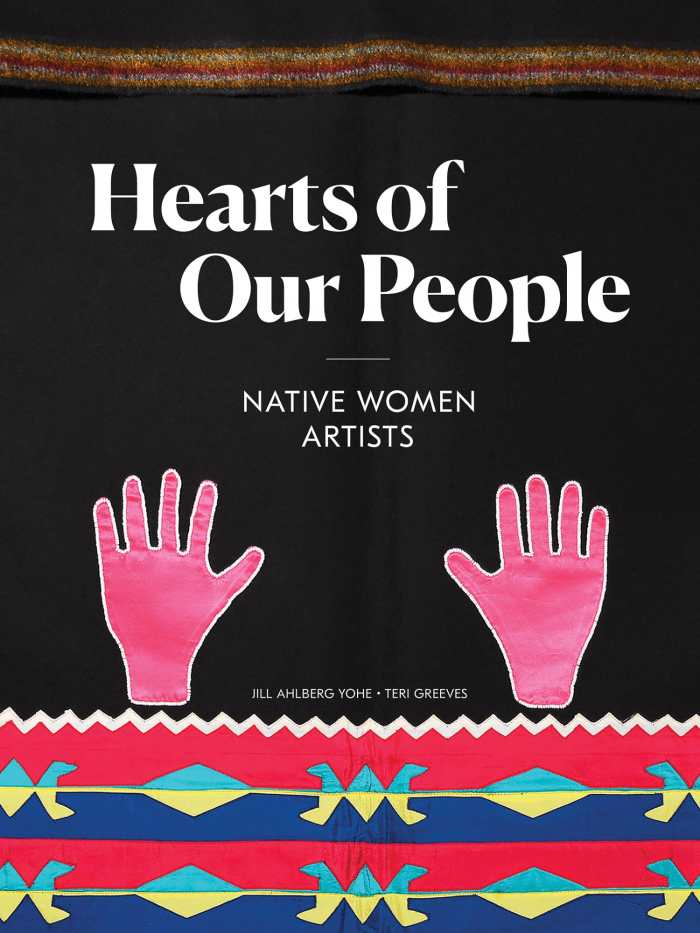Book of the Day Roundup June 10-14, 2019

Castle of Concrete

Katia Raina
Young Europe Books
Softcover $15.95 (304pp)
978-0-9995416-3-0
Buy: Local Bookstore (Bookshop), Amazon
Imagine becoming an adult under the imposing shadow of the Soviet Union. That’s what Sonya faces when she’s pulled down from her quiet life in Siberia to rejoin her mother, a Jewish dissident, in the USSR’s waning days. In Katia Raina’s fascinating and sympathetic Castle of Concrete, the concerns of young adulthood are amplified tenfold against a background of historical upheavals.
In her first days just outside of Moscow, Sonya sees tanks roll toward the capital; is given clothes from the West and a home of conveniences thanks to her mother’s new marriage; is introduced to her Judaism, and learns that it makes her vulnerable; and meets a boy who turns her insides to jelly and light, who takes her on her first date, and who is obsessed with what it means to be authentically Russian.
What’s expected of Sonya often clashes with the woman she’s becoming. Her appearance says “Russian,” but she carries a new Magen David in her pocket, and she knows she has more in common with her synagogue-attending classmate, Misha, than she does with her blond, square-jawed peers. Her new boyfriend, Ruslan, is the class dream, but he’s also involved in amorphous political organizing and is jealous to a point of concern.
Gorbachev and Boris Yeltsin clash in time with Sonya and her mother attending their first Yom Kippur services. An aging history teacher reveals the too high personal costs of the old USSR. Misha teaches Sonya about Babi Yar and Israel and how to play Hava Nageela on the guitar. Ruslan drops Jid as an insult and implores Sonya to forget the past.
As her first year fades toward spring and political demonstrations heat up, Sonya is forced to choose who she wants to be—Jewish, or Russian, or both. Castle of Concrete is a riveting story about growing up in dark political times.
MICHELLE ANNE SCHINGLER (April 27, 2019)
The Way Home
Tales from a Life Without Technology

Mark Boyle
Oneworld Publications
Hardcover $24.95 (304pp)
978-1-78607-600-7
Buy: Amazon
On the night that Mark Boyle checked his email for the last time then turned off his phone, he hoped it would stay off forever. His plan: to live a technology-free, simple life, connected to nature on a half-wild, three-acre smallholding in County Galway, Ireland. Strangely enough, his last email was from an editor at a publishing house interested in his new simple living project.
For a writer, this was good news, but Boyle, author of The Moneyless Man, wasn’t sure it would work—publishers no longer accepted hand-written manuscripts, and Boyle thought he’d sounded the death-knell on his career with his decision to give up technology. He’d be living with no electricity, phone, television, light bulbs, or running water. No flush toilet, power tools, or gas stove. And no computer. He’d have to re-learn how to write without handy online research, spell-check, and easy deletes. And how would editing work without the instant communication now considered essential? Instead of giving up, he picked up a pencil.
The result is a book that is an invitation to look around, eliminate all distractions, and develop an intimate relationship with our own landscape. To dive deeply into what it means to be a human being in relationship with what surrounds us. To use only what we need, and only those things which support our values. To look carefully at the costs of our conveniences, our speed, our craving for “more.” To be clear-eyed about the effects of our choices on the natural world, our environment, our human and non-human communities, and our own precious souls.
The Way Home chronicles Boyle’s back-breaking, soul-strengthening labor and communion with the natural world as he learns that the “simple life” is actually complex, mysterious, and demanding—and that it brought him contentment and deep, abiding joy.
KRISTINE MORRIS (April 27, 2019)
The Stonewall Riots
A Documentary History

Marc Stein
NYU Press
Softcover $35.00 (352pp)
978-1-4798-1685-9
Buy: Local Bookstore (Bookshop), Amazon
Marc Stein’s The Stonewall Riots: A Documentary History is an essential collection of primary sources including newspaper articles, opinion pieces, court documents, and photos that place a central event in LGBTQ+ history in context.
The book’s documents are organized into three sections, covering the five years leading up to Stonewall, the 1969 Stonewall uprising itself, and the five years afterward. The documents come primarily from LGBTQ+ sources and they focus on LGBTQ+ bars and policing, political protests, and pride marches.
Stein’s introduction gives a crystal-clear overview of current thinking on what led to the Stonewall uprising, what happened there, and how it influenced later LGBTQ+ activism and policies. The book doesn’t come to conclusions but instead presents evidence for various theories and argues that the primary documents can help readers make up their own minds.
The documents themselves represent an impressive range of voices that describe meetings, marches, arrests, and bar raids. Their tones range from formal and journalistic to impassioned editorializing to informal first-person narrations, many of which are moving, infuriating, funny, or all three at once.
An especially powerful piece is a newsletter article by D. L. Leitsch that explains why the police raid on Stonewall caused riots when other raids did not: Stonewall was an especially welcoming place for the young, the homeless, and groups such as “drags” and “queens” who weren’t always comfortable in other gay spaces.
Some of the material repeats across multiple documents, but this allows differing perspectives and experiences to shine through. The book’s comprehensive endnotes, index, and suggestions for additional reading provide inroads to further study and research.
The Stonewall Riots is an invaluable addition to LGBTQ+ history, gathering for the first time a wealth of primary documents that will deepen understanding of a pivotal, culture-changing event.
REBECCA HUSSEY (April 27, 2019)
Are You Afraid of the Dark Rum?
and Other Cocktails for ’90s Kids

Sam Slaughter
Andrews McMeel Publishing
Softcover $12.99 (128pp)
978-1-4494-9156-7
Buy: Local Bookstore (Bookshop), Amazon
Sam Slaughter’s 90s-themed cocktail book Are You Afraid of the Dark Rum? is full of delicious drinks, nostalgia, and just the right amount of corny humor.
Puns and plays-on-words are abundant in this book. It induces strong 90s flashbacks with its myriad of pop culture facts and teems with groan-inducing laughs. It begins with a basic tutorial on glassware, bar tools, and techniques—as any cocktail book should—followed with a fantastic array of themed recipes, from Saved by the Jell-O to The Y2K and the I’ll Never Let Yuzu Go, Jack. Only a page on metric equivalents seems to be unnecessary in this pert, well-thought out book.
Aptly named cocktails pay homage to television sitcom actors, cartoon characters, and boy bands, accompanied by trivia from the decade that proves a fun addition and a reminder of less pretentious periods of cocktail making. All are pictured in appropriate glassware, featuring vibrant colors and well-made garnishes. Amy Ellis’s photography is a perfect fit for the theme.
Some recipes are as eye-rolling as the book’s humor, but these are crowd pleasing and easy-to-execute drinks. A handful of ingredients and tools seem out of place in the mix, including a smoking gun and Ancho Reyes, both of which have minimal applications in home bar settings. But there is an excellent variety of ingredients, techniques, and spirits included, and the final result is approachable for a range of drinkers.
In the delightful appendix, even more ingredients are presented for an absolutely ideal 90s dance party. 90s-themed drinking games and one hit wonder playlists are the cherry on top of this corny and delicious cocktail book.
Ridiculous and overdone—exactly as intended—Are You Afraid of the Dark Rum? is literally refreshing in its approach to reliving the 90s, especially within the current mixology-obsessed culture.
KATIE ASHER (June 10, 2019)
Hearts of Our People
Native Women Artists

Jill Ahlberg Yohe, editor
Teri Greeves, editor
University of Washington Press
Softcover $39.95 (300pp)
978-0-295-74579-4
Buy: Amazon
Hearts of our People catalogs the first major exhibition focused on Native American women’s art. Curated by Jill Ahlberg Yohe and Teri Greeves, and incorporating essays by many Native artists and scholars, this is a landmark achievement in reassessing indigenous women’s artwork in a range of media.
The book constructs a new canon for Native women’s art, elaborating on its particular aesthetics. It describes artistic processes and the resilient evolution of Native artists during colonization and forced relocation. Art history essays and artist interviews uncover multilayered motivations that impel Native women to create, including the need to protect one’s family and heritage, connection with the natural and spiritual worlds, and working through trauma.
Contemporary artists often seek to reclaim cultural power: Witness the opulent jewelry of Keri Ataumbi and Jamie Okuma that honors Pocahontas as a powerful diplomat rather than as a “vapid” Disney princess, or Rose Simpson’s fierce muscle car adorned in Pueblo blackware patterns.
Ahlberg Yohe and Greeves challenge the perception of Native women’s art as purely representative and eliminate its double marginalization as “primitive” or “handicrafts.” They reframe definitions of fine art versus decorative art and explore broad themes, including of legacies, relationships, and power. The result is a more balanced, nuanced vision of what great art really is.
“In Focus” sections examine specific women artists, objects, and artistic traditions. They explore intricate, labor-intensive, and skilled processes of traditional quill art, weaving, beading, pottery, and basketry, as well as more contemporary media including sculptural installations, video, and performance art. Illustrated with historic images and vibrant color photographs of exhibition artwork, the book is as visually stimulating as it is intellectually and culturally important.
As Ahlberg Yohe and Greeves note, this is not a definitive volume of Native women’s art history, but an exciting, giant first step toward its greater appreciation, understanding, and scholarship.
RACHEL JAGARESKI (June 11, 2019)
Barbara Hodge
